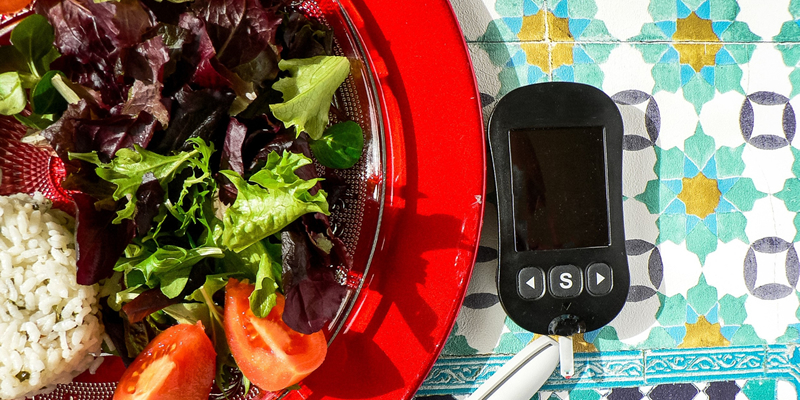Understanding blood glucose level ranges can be a key part of diabetes self-management.
This page states ‘normal’ blood sugar ranges and blood sugar ranges for adults and children with type 1 diabetes, type 2 diabetes and blood sugar ranges to determine people with diabetes.
If a person with diabetes has a meter, test strips and is testing, it’s important to know what the blood glucose level means.
Recommended blood glucose levels have a degree of interpretation for every individual and you should discuss this with your healthcare team.
In addition, women may be set target blood sugar levels during pregnancy
The following ranges are guidelines provided by the National Institute for Clinical Excellence (NICE) but each individual’s target range should be agreed by their doctor or diabetic consultant.
Recommended target blood glucose level ranges
The NICE recommended target blood glucose levels are stated below for adults with type 1 diabetes, type 2 diabetes and children with type 1 diabetes.
In addition, the International Diabetes Federation’s target ranges for people without diabetes is stated. [19] [89] [90]
The table provides general guidance. An individual target set by your healthcare team is the one you should aim for.
| Target Levels by Type | Upon waking | Before meals (pre prandial) | At least 90 minutes after meals (post prandial) |
|---|---|---|---|
| Non-diabetic* | 4.0 to 5.9 mmol/L | under 7.8 mmol/L | |
| Type 2 diabetes | 4 to 7 mmol/L | under 8.5 mmol/L | |
| Type 1 diabetes | 5 to 7 mmol/L | 4 to 7 mmol/L | 5 to 9 mmol/L |
| Children w/ type 1 diabetes | 4 to 7 mmol/L | 4 to 7 mmol/L | 5 to 9 mmol/L |
*The non-diabetic figures are provided for information but are not part of NICE guidelines.
Normal and diabetic blood sugar ranges
For the majority of healthy individuals, normal blood sugar levels are as follows:
- Between 4.0 to 5.4 mmol/L (72 to 99 mg/dL) when fasting [361]
- Up to 7.8 mmol/L (140 mg/dL) 2 hours after eating
For people with diabetes, blood sugar level targets are as follows:
- Before meals : 4 to 7 mmol/L for people with type 1 or type 2 diabetes
- After meals : under 9 mmol/L for people with type 1 diabetes and under 8.5mmol/L for people with type 2 diabetes
Blood sugar levels in diagnosing diabetes
The following table lays out criteria for diagnoses of diabetes and prediabetes.
| Plasma glucose test | Normal | Prediabetes | Diabetes |
|---|---|---|---|
| Random | Below 11.1 mmol/l Below 200 mg/dl | N/A | 11.1 mmol/l or more 200 mg/dl or more |
| Fasting | Below 5.5 mmol/l Below 100 mg/dl | 5.5 to 6.9 mmol/l 100 to 125 mg/dl | 7.0 mmol/l or more 126 mg/dl or more |
| 2 hour post-prandial | Below 7.8 mmol/l Below 140 mg/dl | 7.8 to 11.0 mmol/l 140 to 199 mg/dl | 11.1 mmol/l or more 200 mg/dl or more |
Random plasma glucose test
A blood sample for a random plasma glucose test can be taken at any time. This doesn’t require as much planning and is therefore used in the diagnosis of type 1 diabetes when time is of the essence.
Fasting plasma glucose test
A fasting plasma glucose test is taken after at least eight hours of fasting and is therefore usually taken in the morning.
The NICE guidelines regard a fasting plasma glucose result of 5.5 to 6.9 mmol/l as putting someone at higher risk of developing type 2 diabetes, particularly when accompanied by other risk factors for type 2 diabetes.
Oral Glucose Tolerance Test (OGTT)
An oral glucose tolerance test involves first taking a fasting sample of blood and then taking a very sweet drink containing 75g of glucose.
After having this drink you need to stay at rest until a further blood sample is taken after 2 hours.
HbA1c test for diabetes diagnosis
An HbA1c test does not directly measure the level of blood glucose, however, the result of the test is influenced by how high or low your blood glucose levels have tended to be over a period of 2 to 3 months.
Indications of diabetes or prediabetes are given under the following conditions:
- Normal: Below 42 mmol/mol (6.0%)
- Prediabetes: 42 to 47 mmol/mol (6.0 to 6.4%)
- Diabetes: 48 mmol/mol (6.5% or over)
Why are good blood sugar levels important?
It is important that you control your blood glucose levels as well as you can as too high sugar levels for long periods of time increases the risk of diabetes complications developing.
Diabetes complications are health problems which include:
This list of problems may look scary but the main point to note is that the risk of these problems can be minimised through good blood glucose level control. Small improvements can make a big difference if you stay dedicated and maintain those improvements over most days.






